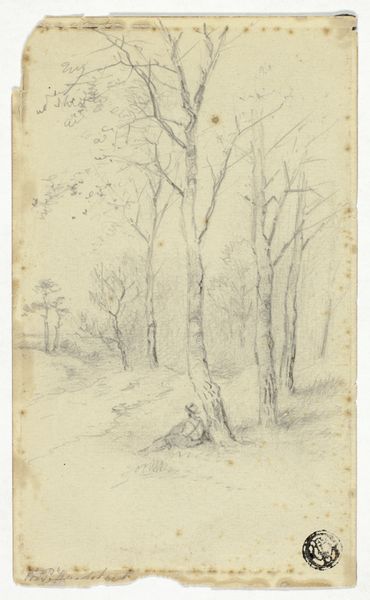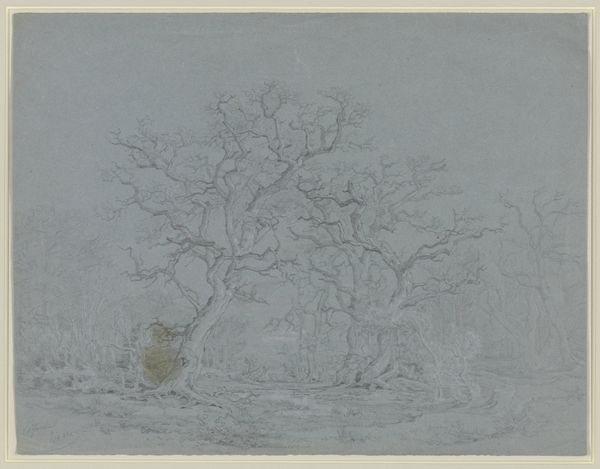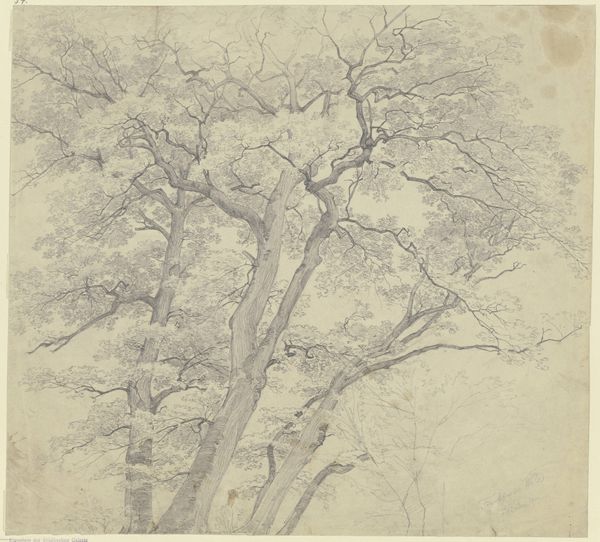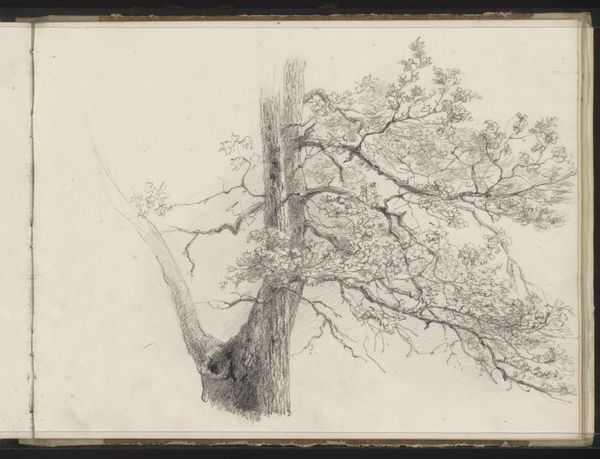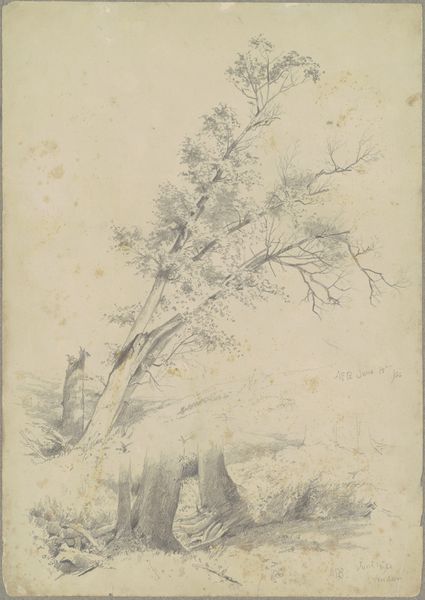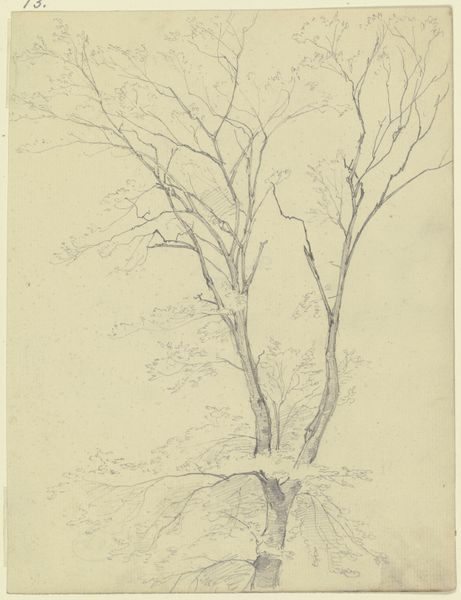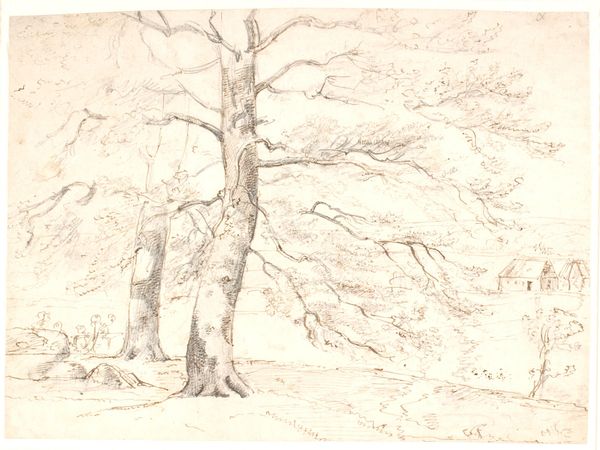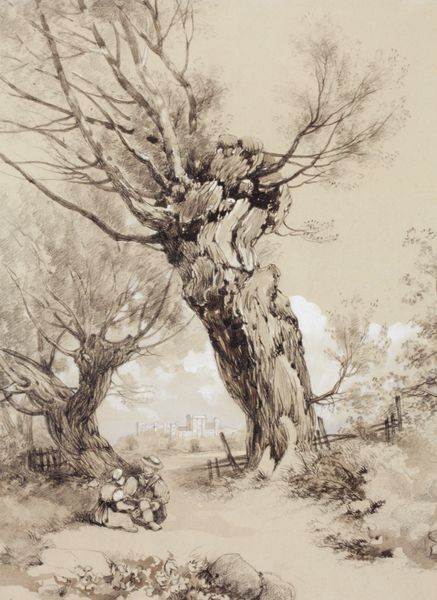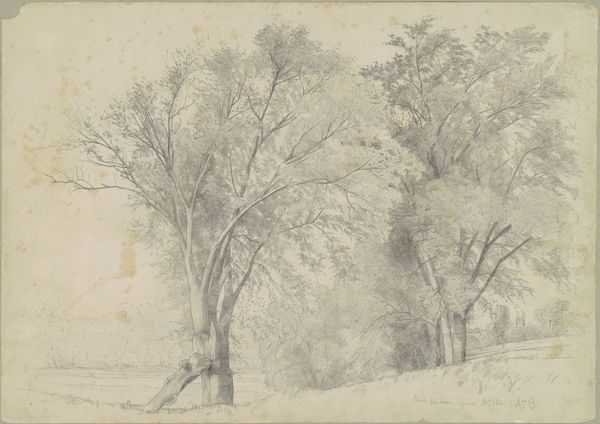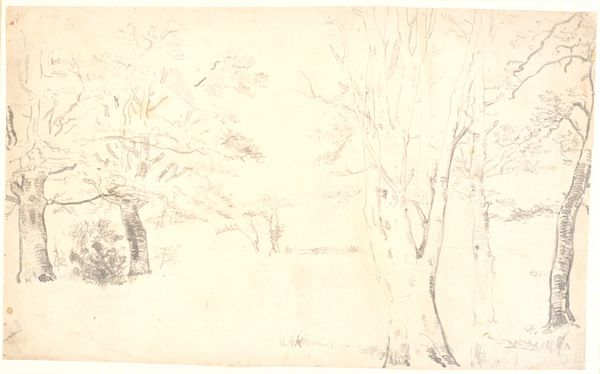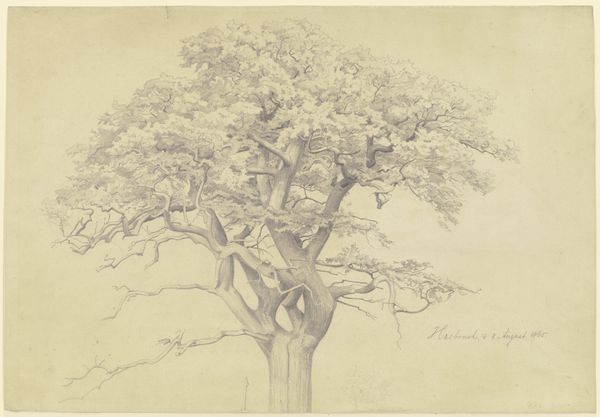
Copyright: Public Domain
Curator: This delicate pencil and ink drawing is entitled “Oak Tree near Weßling,” created around 1870-1875 by the German artist Philipp Röth. You can find this small work on paper here at the Städel Museum. Editor: Immediately I notice the striking contrast between the massive, sturdy oak and the solitary, almost imperceptible figure seated at its base. It suggests a real reverence for the natural world, the almost spiritual feeling of finding sanctuary beneath such a majestic presence. Curator: Röth, along with other artists of his time, was keen on plein-air drawing. There was a big push towards sketching outdoors, focusing on intimate observation. It connects to a growing appreciation for landscape, moving beyond simple depictions to capturing feeling. These sketches became associated with national identity and regional pride. Editor: Absolutely. The oak itself is a powerful symbol with deep roots, both literally and metaphorically. It represents strength, endurance, and a connection to the past. Seeing that lone person sitting there, dwarfed by the tree, emphasizes the human connection with something greater, a longing for stability perhaps. It's also really romantic in its monochrome subtlety. Curator: True, though keep in mind that the appreciation for "untouched" landscapes itself carried a lot of cultural baggage. The desire for an authentic national image often ignored complex realities of land ownership and usage. Landscape was idealized but wasn’t politically neutral. The very act of sketching in nature had class connotations too. Not everyone had the leisure for landscape. Editor: But regardless of politics or history, Röth really captured something about how we relate to nature. Notice how the branches are drawn as if they reach up toward an invisible realm. You could even see Christian symbolic interpretations in this work, since for centuries the sturdy Oak was associated with divine strength. Curator: Röth was influenced by Romanticism and its fascination with nature, memory, and folklore. One could suggest it as an attempt to reconnect with tradition. That person at the base could just be a representation of the common man searching for refuge, inspiration, in nature. Editor: Well, I find the image quite moving. It makes me want to walk through a forest myself. Curator: Indeed, it reminds us that landscapes can offer both solace and complex stories if you choose to look closer.
Comments
No comments
Be the first to comment and join the conversation on the ultimate creative platform.
